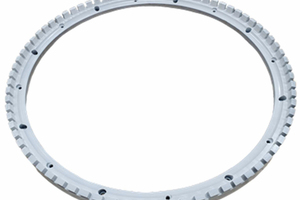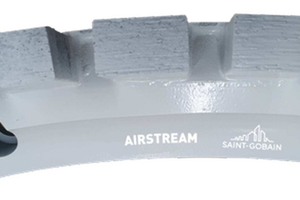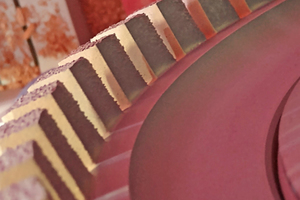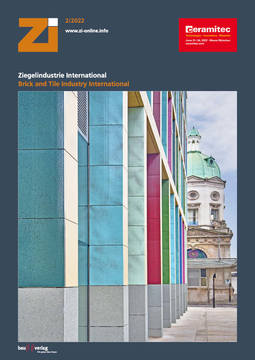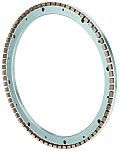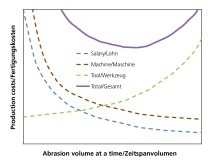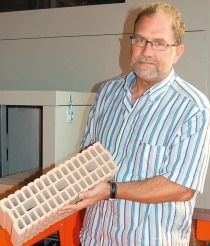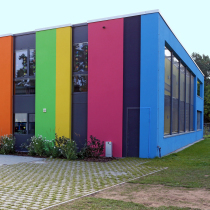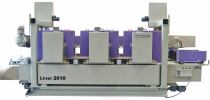New solution prevents damaging ‘sandblasting effect’
Good news for the clay brick industry informs Saint Gobain Abrasives. The patent-pending AIRSTREAM diamond grinding rings from Saint-Gobain Abrasives make the production of high-precision clay blocks much more reliable and cost-efficient. Thanks to a new body design of the tools, the dreaded ‘sandblasting effect’ can be avoided. This effect otherwise leads to increased tool wear during surface grinding.
High-precision clay blocks with a wide range of shapes and names offer considerable advantages for house construction, making building easier, lighter, faster and more cost efficient. To guarantee high block quality and consistent dimensional accuracy, the masonry blocks are amongst other things ground to their exact final size during production.
Holger Lenkeit, Business Development Manager CP Engineering Northern Eastern Europe at Saint-Gobain Abrasives: “Especially with surface-grinding machines with internal ventilation, there is the problem of the so-called ‘sandblasting effect’, which causes damage to the grinding tools and leads to premature wear.”
In internally ventilated surface grinders, air is drawn in from the outside and, thanks to special geometries, fed to the grinding process at high speed. Here, it flows sideways against the segments of the diamond grinding ring. Inside the tool, as a result of the grinding process, particles of material get into the air stream at the same time. With this mix of air and material particles, the so-called ‘sandblasting effect’ results with washing out of the segments on the inner surface of the tools. In this way, the segment surface area is decreased. Consequently, fewer diamond grains are in action, the grinding pattern becomes rougher and more uneven. The resulting forces in the workpiece increase, which leads to a poorer grinding pattern and edge chipping. As a result, wear increases faster, necessitating tool changes with associated machine downtime.
Holger Lenkeit: “The AIRSTREAM system of our new diamond grinding rings puts an end to this tool-damaging erosion effect: The design of the tool body has been changed so that the direction of the air flow is optimized in the interior of the grinding ring. As a result, the air -material mix is no longer fed sideways against the segments, but to the upper part of the segments. As a result, the segments remain stable in shape to the end. Nearly full segment width is preserved, and the grinding process is gentler, amongst other things because of the reduced air turbulence in the interior of the tool.”
Service lifetime increased significantly
The advantages of the new AIRSTREAM system are quickly noticeable for clay block manufacturers: The segment surface remains stable during the lifetime of the tool, that means: higher segment shape stability with uniform tool hardness and grinding quality. The segment volume can now be nearly fully used during the grinding process as the segment width is preserved over the entire tool lifetime. Depending on the application, an up to 20-percent-longer service lifetime results for the AIRSTREAM diamond grinding ring compared with conventional grinding tools used up to now. The better balance accuracy during the entire lifetime of the tool additionally protects the machine and also ensures a consistently good grinding pattern on the material. The bottom line is that tool costs are reduced significantly, tool change intervals are lengthened and the associated production downtime is reduced, while the reject rate is also cut.
Holger Lenkeit: “AIRSTREAM is an absolute productivity booster for the clay brick industry. Thanks to the longer service lifetime, the output is maximized while grinding quality and dimensional stability are increased significantly with low roughness. In addition, besides the lower tool use and minimized tool changes, the lower run-in times are another factor. Not to be underestimated is the sustainability aspect: the increased efficiency in the use of the tools leads to a reduced tool requirement. The more energy-efficient tool use, with the gentler impact on the machine, means in addition to cost savings that resources can be preserved and CO2 emissions reduced.”

